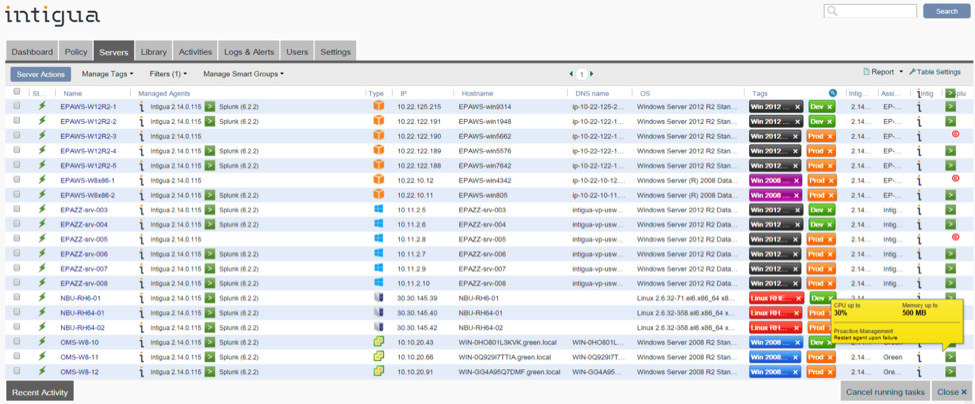One of the most important IT has is to enforce standardization and governance across all managed infrastructure. This seemingly simple task can prove very difficult as IT teams manage heterogeneous IT workloads, or embrace more bimodal IT models in which the traditional on-prem/data center IT environment evolves into more cloud resources and different demands from users. As a result, ITOps teams need to reinvent the way they deploy, manage, and automate policies across their servers.
Server Classification and Policy Management
The first step to establishing standards and governance is ITOps’ development of a framework to identify and classify servers and their roles within the organization. For example, classifying servers based on development, staging or production is a great place to start implementing standards. Another example may be identifying servers by a role or initiative such as data, analytics, security, or management policies, which can be applied based on the server role within the IT strategy. For example, ITOps could classify TrendMicro Antivirus within the security role, Splunk for the data analytics role, or AppDynamics for the application performance monitoring (APM) role.
The goal of classification is to establish a metadata layer associated with the server roles in the environment. This layer will assist with future scale, management, and orchestration of critical ITOps tasks. As the IT stack gets more complex, this classification will require constant effort to maintain compliance with policy management for IT teams.
With classification complete, IT can create policies and implement them across the entire stack. As an example, baseline security policies, such as enforcing Endpoint Antivirus and associated policies, are paramount to a successful IT strategy. Another example would be if IT wanted to increase their monitoring visibility across their servers. They would then choose to enforce Zabbix agents (or monitoring agents of their choice) across their server farm. When policies are established, the difficult part begins as IT is tasked with deploying, and managing compliance of those policies over time.
Take Action with Automation and Management Tools
The good news is that as ITOps environments evolve, the tools built to manage the transitions to more complex IT environments are evolving as well. There are a plethora of traditional tools to accomplish the task that still support newer environments. For Microsoft server stacks, Microsoft System Center is a powerful tool for configuration management and provisioning. Yet, managing and maintaining Microsoft’s tools or other agent-based management tools can be very difficult. Agent management tools like Jetpatch simplify the process by helping to manage agents, endpoints, and policies across the entire server stack.
Whether it be on-prem or in the cloud, tools like Jetpatch can help lift the burden of orchestrating software agents. They also offer the benefit of integration with other management tools to reduce complexity and overhead. For example, Jetpatch can integrate with the Microsoft Management Agent to increase visibility and optimize the IT team’s ability to enforce policies and governance for products like Microsoft Operation Management Suite (OMS).
Recap
- Create the Metadata Layer for Server Classification
- Roles such as backup servers, Windows servers, data servers, log servers, and security servers.
- Develop Policies and Governance for your Operations
- Ensure all Windows servers have security endpoints installed and maintained.
- Ensure that monitoring tools are installed on all servers.
- Ensure agents are up-to-date and managed.
- Leverage Tools to Help Deploy and Manage Policies
- Leverage tools to help give visibility to configuration management across your stack and automate the management of agents.
- Governance: Maintain Updates and Manage Status Over Time
As IT environments continue to evolve, it will be a constant challenge for ITOps teams to manage configurations across their servers as well as maintain policy compliance and governance. By leveraging new tools to help ease the burden of configuration management and agent orchestration across heterogeneous IT workloads, IT teams can start bridging the gap between maintaining full stack standards and governance for their IT Strategy.



